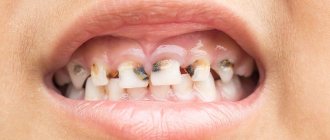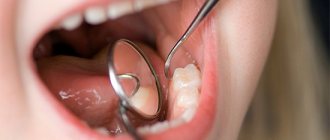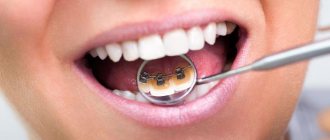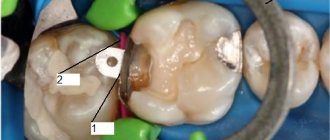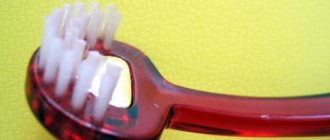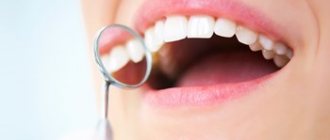Modern treatment of caries
Thanks to the constant improvement of techniques, today the diagnosis and treatment of dental caries is carried out at a high level, which allows for maximum preservation of healthy tissue. In addition, in situations where just a few years ago advanced caries led to mandatory tooth extraction, today tooth-preserving operations are performed. Among them are the following.
- Resection:
treatment of tooth root caries by removing the apex of the root. - Root amputation:
removal of the damaged root part of a two-rooted or three-rooted tooth. - Coronoradicular separation:
separation of tooth roots. It is carried out when caries has affected the tooth in the area of root branching. - Hemisection:
removal of the damaged part of a multi-rooted tooth and the adjacent crown area.
For those who are afraid to treat caries: treatment in a dream
Fear of dental treatment is a relic from the past, when dentists had not yet used advanced instruments and highly effective anesthetics that completely eliminated pain during medical procedures. All people understand this, but, alas, not everyone can overcome internal prejudices and overcome fear and panic in the doctor’s office.
When a patient is very frightened, he experiences stress, cannot sit calmly in the dental chair, and of course, this prevents the dentist from carrying out treatment and working with the tooth. Our dental clinic in Moscow, Firadent, offers such patients a special service - treatment of dental caries during sleep or, as professionals say, under sedation.
Sedation is a state of light medicated sleep into which the patient is immersed before the start of the treatment process. The use of sedation allows the doctor to perform all necessary actions without pain and without discomfort for the patient. You will sleep, and the dentist will cure caries, and in one visit you can successfully treat several teeth damaged by caries at once.
Sedation not only allows you to treat teeth without pain - it does not give any negative side effects compared to general anesthesia. You can find out more about the service of dental treatment in your sleep and its cost by reading the topical material on our website or by contacting the specialists of our clinic using contact phone numbers!
Indications for the treatment of dental caries
Indications are reduced to visual and tactile.
✔
Visual:
stains on the enamel, darkening of the cervical area of the tooth, chipping of part of the tooth and darkening underneath it, a dark border around the perimeter of the filling, a carious hole.
✔
Tactile:
aching pain when eating sweet, salty and sour foods, and acute pain from sudden temperature changes.
What are caries?
Caries can affect different parts of the tooth and according to the area of localization of carious damage, it is classified by type. Let's get acquainted with different types of caries and find out their characteristic features.
Cervical caries
It affects the neck of the tooth and develops quite quickly, because the natural enamel coating in this area is thin and often demineralized.
Cervical caries easily spreads to neighboring teeth and its main danger is that, if left untreated, pulpitis may occur, because the neck of the tooth is located quite close to the nerve of the tooth. By the way, for the same reason, a tooth with cervical caries can be quite painful. The treatment method for cervical caries is selected based on the stage of development of the disease. With medium and deep cervical caries, you cannot do without drilling the tooth, but if you see a white spot on the neck of the tooth and immediately contact the dentist, the tooth will be cured by remineralization or the infiltration method - icon technology.
YOU NEED TO REMEMBER! One of the reasons provoking the development of cervical caries may be the wrong choice of brush for cleaning teeth. A brush with hard bristles can damage thin tooth enamel. Frequent use of toothpastes with abrasive particles can have the same negative effect on the integrity of tooth enamel. From here we draw a simple conclusion: the choice of tools and materials for dental hygiene should be deliberate! If you don’t know how to choose the right brush and paste to keep your teeth healthy, come to our dental clinic in Moscow - “Firadent” and get from our doctors the most detailed professional advice on proper dental and oral hygiene!
Cervical caries requires urgent treatment, because the tooth is destroyed quickly and if the inflammation spreads to the pulp or root system, it will not always be possible to cure the tooth with conservative therapy. Sometimes, with deep cervical caries, a tooth has to be removed, and its subsequent restoration with prosthetics or implantation involves significant financial costs.
As an example and to motivate timely treatment of cervical caries or in any other form, let’s compare the prices for conservative therapy and implantation. You can cure average cervical caries in Moscow for 4-5 thousand rubles, the price of implantation starts from 50,000 rubles. The difference is huge, isn't it? Therefore, if you want to treat your teeth inexpensively, don’t delay visiting the dentist!
Types of caries by localization
fissure
It begins in the physiological recesses of the chewing teeth - fissures. The patient cannot detect it during self-examination.
Approximal (or contact)
It begins on the contacting surfaces of adjacent teeth. As a rule, this is a consequence of not using floss or irrigator as part of hygiene.
Cervical
It begins at the base of the gum, gradually destroying the neck of the tooth. It is the result of severe tartar.
Interior
It begins under the tooth filling if errors were made during its installation.
Under the crown
It begins under the crown if it does not fit tightly to the tooth, causing microscopic food debris to accumulate.
What can cause caries?
Caries occurs due to the proliferation and active activity of harmful microorganisms - bacteria - in the human oral cavity. In order for them to multiply and spoil teeth, a person needs to create an environment favorable for them.
It is possible to create ideal conditions for the reproduction and vital activity of pathogenic organisms in the following cases:
- oral and dental care is not performed or hygiene measures are carried out incorrectly;
- a person consumes too much sweets, drinks coffee and carbonated drinks;
- the body does not receive enough calcium, vitamins and essential microelements;
- a person has problems with the gastrointestinal tract;
- eating too hot or cold food.
Caries can occur even on completely healthy teeth. Bacteria multiply in the mouth very quickly and if you do not fight them, you can lose several teeth at once. A small hole forms in the tooth, then pain begins and the process spreads to the remaining teeth.
It is better to prevent the occurrence of caries than to try to treat something later, because it will be better for the person in any case.
Types of caries according to severity
Initial caries
Characterized by a change in the color of the enamel: the so-called white spot caries. Does not cause discomfort to the patient.
Superficial caries
Characterized by the appearance of dark spots on the enamel. The affected tooth may react weakly to cold, sour or sweet foods for a short time.
Average caries
Characterized by destruction of dentin. Painful sensations to external stimuli are more pronounced and last longer.
Deep caries
Characterized by damage to a large area of tooth enamel and dentin. The pain does not go away without the use of analgesics.
Modern methods of treating dental caries
Today, there are several methods for treating caries, differing in the degree of surgical intervention - the earlier the degree of development of the disease, the greater the likelihood that it will be possible to get rid of it with few sacrifices.
Modern technologies for treating caries without preparation:
- Remineralization:
a procedure for treating enamel caries, which involves treating the tooth surface with a solution containing fluoride, phosphorus and calcium. The patient is also prescribed a number of medications to take orally. Helps in the treatment of white caries, or caries in the spot stage. - Infiltration:
chemical-mechanical treatment is also a method of treating caries without preparing Icon. It is used for initial caries and only on smooth surfaces or between teeth. First, a gel is applied to the carious area, which splits the affected enamel; the site of bacterial development is dried under the influence of ethyl alcohol and an air stream and treated with a polymer resin, which fills the enamel pores. The entire procedure lasts about fifteen minutes. - Air abrasive treatment:
“knocking out” superficial caries using a powerful stream of abrasive particles. The force of action is designed to affect only soft tissues affected by bacteria. The method is painless, and therefore there is no need for anesthesia. Air abrasive treatment reduces the risk of microcracks forming after treatment, in some cases it is even more effective than a drill. However, this method of caries treatment is not always applicable. - Ozone treatment:
destruction of caries bacteria using a natural antibiotic and oxidizing agent - ozone. Another method of non-contact treatment of caries. Ozone not only suppresses infection, but also has a remineralizing effect on tissue. During the procedure, a special device converts ozone from oxygen and supplies it to the affected area. Ozone destroys bacteria and is converted back into oxygen. The technology for treating caries with ozone allows you to leave healthy cells intact. Another advantage is that there is no need for anesthesia. The treatment time for caries using this method is less than a minute. Like the previous one, it is suitable only in the initial stages of caries or as its prevention. - ART technique:
restorative therapy, during which, using a special instrument, the affected tissue is removed and the cavity is filled with special dental cement. This method of treating caries was invented in third world countries, where it was not possible to open full-fledged dental offices, but it is also used in developed countries. Completely manual work allows you to act carefully and preserve as much healthy tissue as possible. - Laser treatment:
an effective technique for eliminating superficial and intermediate caries (for example, in the treatment of dentin caries) using laser fluorescence. During the procedure, a bactericidal solution is used, which cools the tooth and reduces pain. In addition, laser devices do not produce vibrations, which could increase pain. That is why the laser treatment method is indicated primarily for children and pregnant women. The laser selectively acts on the affected area, “evaporating” it, and disinfects the resulting cavity, thus eliminating the risk of developing secondary caries. - Treatment of dental caries with diet:
a method of treating caries naturally, developed based on the scientific theory of the American researcher Ramiel Nagel. According to his observations, caries does not have an infectious-bactericidal nature, but is associated with the weakening and destruction of enamel due to a lack of necessary substances. Therefore, the problem can be solved with proper nutrition. Adherents of natural treatment recommend actively using cod liver, fish caviar, butter and other products containing fat-soluble vitamins, nutritious broths, as well as chicken, beef and fish. It is better not to overuse fruits - due to their high sugar content - and combine them with small portions of fat, such as cream.
How to treat caries: stages
To get rid of caries, you need to make an effort, because although modern drills do not vibrate like hammer drills, they still make us wait for the sudden appearance of acute pain - while drilling out carious tissues. Fortunately, modern anesthetics allow the dentist to properly numb the teeth during treatment - unlike the ineffective novocaine and lidocaine that were widely used previously.
Proper treatment of dental caries in dentistry consists of a number of successive stages, each of which has a clear goal. But nevertheless, the most important thing is the complete removal of caries, because... if the removal of tissue affected by caries is incomplete, it will immediately develop under the filling and will certainly lead to the development of pulpitis and the need to remove the nerve from the tooth. Watch the video below to see how hard tooth tissues affected by caries are removed.
Treatment of dental caries: video 1-2
In detail about the stages of treatment of average caries -
But before we move on to drilling out the carious tissue, which you could see in the video above, you still need to perform a number of procedures to prepare the tooth for treatment, as well as anesthetize it with an injection of a local anesthetic. For those who like stronger anesthesia, there are methods of sedation and general anesthesia.
- Cleaning a tooth from plaque (Fig.4) –
Before starting treatment, it is necessary to hygienically clean the tooth, as well as neighboring teeth, from plaque and tartar. For this purpose, ultrasonic attachments are used to remove massive dental plaque, as well as special brushes and abrasive pastes to remove soft microbial and pigmented plaque. - Determination of tooth color using a special scale (Fig.5) –
Hygienic treatment of the tooth also helps the doctor to accurately select the color of the filling material. In this case, the filling will match the color of the tooth, and will not stand out against the background of the tooth’s own tissues. This is especially important for teeth that are visible when you smile. - Anesthesia (Fig. 6) – is it painful to treat caries: for painless drilling of carious tissues if the tooth is alive, local anesthesia is necessary. Modern painkillers in dentistry, for example, ultracaine or ubistezin, make the intervention absolutely painless. Depending on the amount of anesthetic administered and the method of anesthesia, the anesthesia time can last from 40 minutes to several hours.
The only pain that the patient can feel is the moment the needle is inserted into the gum, as well as the process of removing the anesthetic into the tissue. This process can sometimes be painful, which largely depends on the patient’s level of pain sensitivity, as well as on the speed at which the anesthetic is injected into the soft gum tissue. The faster the solution is administered, the more painful the injection. - Drilling out carious tissues – As can be seen in Fig. 7, enamel is always destroyed with average caries to a lesser extent than the underlying tissue (dentin). This is due to the fact that enamel is much, much stronger and harder than dentin. Therefore, the carious cavity usually expands in depth, and the entrance hole in the enamel can even be quite small.
The dentist must drill out the edges of the enamel overhanging the carious cavity, and also remove all carious dentin. If you leave even a small amount of dentin affected by caries and put a filling on top of it, then very soon you can expect complications - the rapid development of caries under the filling and destruction of the tooth crown, with the subsequent development of pulpitis and periodontitis (24stoma.ru).
In Fig. 8, the dotted line shows the approximate boundaries of tooth tissue removal. In this way, the cavity is given a relatively correct shape and the next stages of treatment can begin. It should be noted here that recently new methods of tooth preparation have appeared, which help to do without traditional drilling. Recently, it has become possible to remove caries with a laser.
- Isolation of tooth from saliva – this is a very important stage! After the carious tissue is drilled out, and before filling the tooth, the doctor must carefully isolate the tooth from saliva and even the patient’s wet breath. These factors will greatly affect how long the filling will last. Previously, cotton balls and gauze balls were used for insulation, which were used to cover the tooth on all sides. It should be noted that this is a very unreliable and ineffective protection.
For the last 10 years, “cofferdam” has been used for these purposes. The latter is a thin latex “scarf” in which holes are made for the teeth. This scarf is pulled over the teeth (Fig. 9-10), after which 1-2 special metal clasps are installed on the necks of the teeth, which hold the rubber dam against the gums. The edges of such a latex scarf are attached to a special frame (Fig. 11), and we see the result - a group of teeth is completely isolated from the oral cavity.Installing a rubber dam is quite labor-intensive. Some doctors refuse to use it on principle to save their time. The doctor’s use of a rubber dam in the treatment of caries indicates that the doctor is very attentive to the quality of his work, because the quality of the filling will be affected not only by the accidental contact of saliva on the tooth being filled, but also simply by the moist breath of the patient himself.
- Medical treatment of a carious cavity - a cavity formed in the tooth during the removal of carious tissues - is treated with antiseptics.
- Restoring the contact point between teeth – If caries is treated on the contact (interdental) surface of the tooth, then it is also necessary to restore the side wall of the tooth.
This is a rather labor-intensive and complex task than simply treating average caries, for example, on the chewing surface of a tooth. In this case, another stage is added - the installation of special devices to restore the side wall of the tooth. Such devices include wedges (a) and matrix (b) in Fig. 12. Read more about the treatment of interdental caries in the article: → “Treatment of caries between teeth” - Etching the enamel with acid (Fig. 13) is necessary so that the adhesive (something like glue), which will be applied to the surface of dentin and enamel at the next stage, can penetrate deeply into the tooth tissue. For this purpose, a gel based on phosphoric acid is used. After etching, all the gel should be thoroughly washed off, and the tooth surface should be slightly dried.
- Treatment of dentin and enamel with adhesive - for better fixation of a permanent photopolymer filling, enamel and dentin are treated with a special adhesive, which (after absorption) is illuminated with a photopolymerization lamp.
- Applying a gasket under the filling (Fig. 14 b,c) - an insulating gasket, usually made of glass ionomer cement, is applied to the bottom of the cavity. The need for lining material under the filling is explained by the complex mechanisms of polymerization shrinkage of the filling material and other factors (we will not dwell on them).
- Filling – dental filling is necessary to restore the shape of the tooth, its aesthetics, as well as to restore chewing efficiency. For this purpose, photopolymer composite materials are usually used. They are applied in layers and each layer is illuminated with a special lamp, which allows the material to harden.
- Grinding and polishing of the tooth - after the shape of the tooth has been restored using filling material, it is necessary to grind and polish the filling, because it is rough and uneven. Final polishing gives the filling a shine and aesthetics comparable to that of tooth enamel. This completes the treatment of average caries.
→ Cost of treatment of dental caries
Filling a carious defect: video 3-4
Please note that dentists use special metal strips (matrices) and wedges to restore the side walls of teeth. In addition, tooth filling in both cases is carried out using a rubber dam.
Classical treatment of caries in permanent teeth
In advanced cases, non-invasive treatment methods for caries will not help, so specialists turn to the old but effective removal of caries using drilling.
The procedure involves cleaning the affected canals using a drill; if dentin is damaged, pulp and infected tooth tissue can also be removed. It should be noted that the devices that are used for this today have gone far ahead of those that once brought fear to our grandparents. Anesthesia and disinfectants can reduce the pain effect and make the procedure more comfortable for the patient. To complete the treatment of caries, a filling or crown is placed on the tooth and adjusted so that the patient does not feel any discomfort.
Silvering of teeth: advantages and disadvantages of the procedure
Coating children's teeth with silver is one of the most gentle technologies for treating childhood caries in the initial stages. This method is not new in dentistry; it has been used for many decades. The noble metal itself is not used in treatment, but only its active salts. The tooth surface treated in this way becomes denser and more resistant to food acids.
Silvering of teeth is effective only in the initial stage of the carious process, when it appears on the enamel as small spots. The technique is indicated for children under three years of age.
The positive aspects of the procedure include:
- an excellent way to stop the progression of caries on a child’s teeth;
- silvering does not cause negative reactions on the part of a young patient;
- The cost of the procedure is low, which makes it accessible to all patients.
The disadvantages of coating children's teeth with silver include:
- the formation of black plaque on the tooth surface, which does not create an aesthetic effect;
- For deep carious lesions, the technique cannot be used.
Dentists do not recommend silvering the front teeth, because the resulting black plaque causes psychological discomfort in the child. Along with this, there are other contraindications: allergies to the components of the drug, the patient has somatic diseases, in cases of dentin damage by caries and the child is over 3 years old.
Among the most popular drugs for the silvering procedure are domestically produced Argenate and Japanese Saforide. Both products have a therapeutic and prophylactic effect on tooth enamel and are completely harmless to the child’s health.
Main stages of the procedure
If for caries in the stain stage, treatment comes down to brushing the teeth with a special brush, applying a remineralizing composition and taking medications to strengthen the enamel, then in later stages it is necessary to remove the affected tissue and fill the cavity. In this scenario, the principle of caries treatment is as follows:
- anesthesia;
- preparation of a carious cavity;
- removal of infected tissue;
- cavity treatment;
- tooth filling.
Caries treatment and filling are carried out in one appointment. If, during the treatment of caries, damage to the dental pulp is detected, it may require its removal.
Choosing a filling
Previously, mainly mineral cements, acrylic and epoxy, and amalgams were used to make fillings. Today, outdated fillings, which were imperfect in terms of fixation and aesthetics, have been replaced by modern inlays. They improve the adhesion strength to the tooth surface, do not require labor-intensive installation, and are biocompatible with the human body. Among them, the most used are: composites, glass ionomer cements, ormocers, compomers. Materials can be combined to achieve the desired effect.
More about the Keystone system
You have already realized the benefits of the procedure and the ease of its implementation, which means you are considering performing it on your child during the next visit to the dentist. Finally, a few more details about the Keystone system.
The principle of action of fluoride acid APF gel involves a chemical process of remineralization on the surface of the tooth. The Keystone fluoridation and caries prevention procedure for children is safe at any age and is designed to be performed regularly in the clinic - 2 times a year.
Make an appointment
Request a call
Is it possible to cure tooth decay at home?
Treatment of dental caries at home is impossible. However, this disease is preventable. To do this, you should regularly perform oral hygiene using calcium and fluoride toothpaste, visit the dentist twice a year and ensure that your diet contains enough proteins and fewer carbohydrates. For additional protection, you can apply gels to strengthen tooth enamel, which will saturate the teeth with minerals - they are not a cure for caries, but will help reduce the risk of developing the disease.
If it is too late to prevent caries, then herbal compresses and rinsing with strong tea will help temporarily reduce the intensity of pain. You can also press on the area between the lips and nose - there is a point there, the impact of which will send signals to the brain that distract it from the main source of pain. However, instead of diligently practicing traditional healing, it is better to turn to a professional as soon as possible. After all, only he will help you effectively cope with the problem.
Prevention of caries of primary teeth in young children
You should take care of your baby’s dental health from a very early age, namely from the 5th week of your pregnancy. A method of antenatal prevention has been developed especially for expectant mothers and the following are recommended:
- a complete diet for a pregnant woman, including foods high in calcium and phosphorus - milk, cottage cheese, fish and seafood;
- taking vitamin preparations as prescribed by a doctor;
- sanitation of the oral cavity in the second trimester of pregnancy, timely elimination of foci of carious infection.
How to brush your baby's first teeth.
When the first teeth appear at the age of 5-7 months, it is necessary to clean the child’s oral cavity daily using rubber finger brushes. Hygienic procedures using toothpaste are carried out starting from 1.5-2 years.
Choosing a toothpaste
The first toothpaste should be fluoride-free, since young children swallow up to 30% of the product due to lack of teeth brushing skills, which threatens the development of fluorosis (damage to tooth enamel as a result of excess fluoride intake). Your dentist will give you more detailed advice after examining your baby’s teeth.
Cost of caries treatment in Moscow
The cost of caries treatment in each specific case is calculated individually and consists of several components:
- what type of filling will be installed;
- what type of anesthesia will be used;
- how much work the doctor has to do.
Thus, installing a filling on a chewing tooth affected by caries in state dentistry can cost 900 rubles, since it involves the cheapest composite material. The cost of a light filling in a private dental clinic in Moscow varies between 1500 – 2500 rubles. Treatment of caries of anterior teeth exceeds 3,000 rubles, since there are increased demands on aesthetics. As for anesthesia, local anesthesia starts at 300 rubles per tooth, general anesthesia starts at 2,000 rubles, and treatment with sedation, depending on its degree, ranges from 3,000 to 15,000 rubles.

